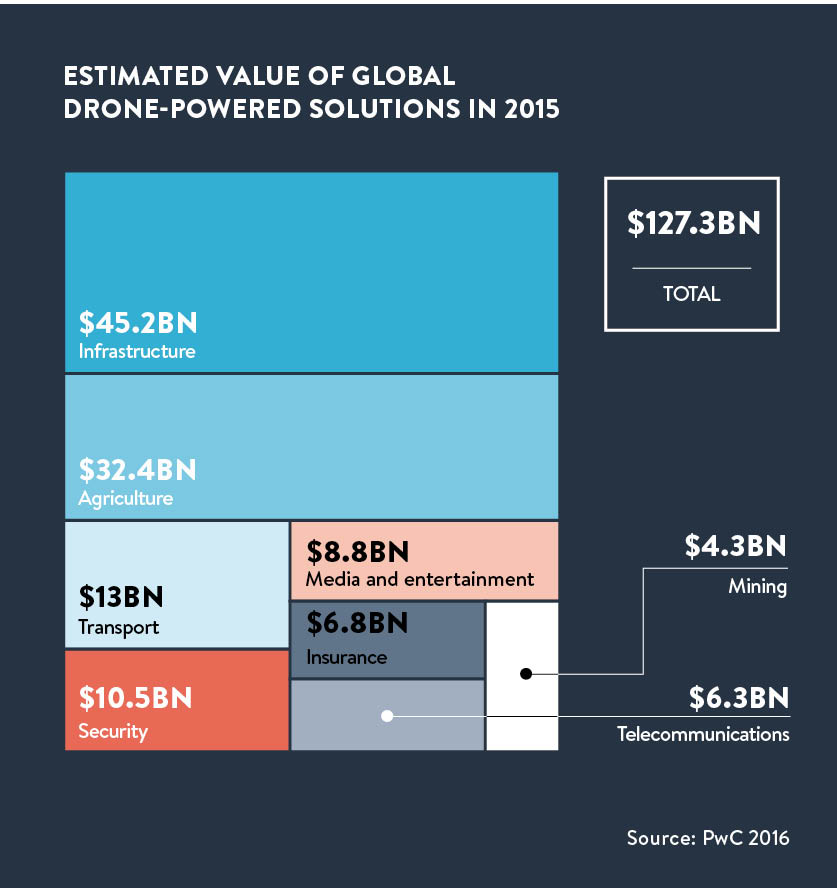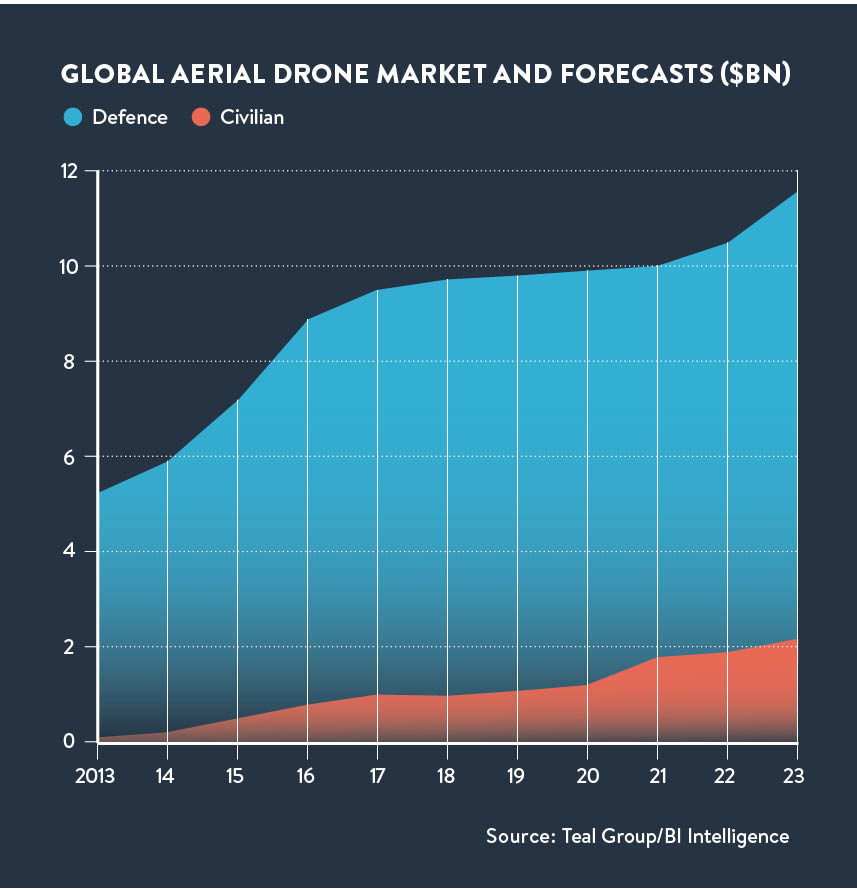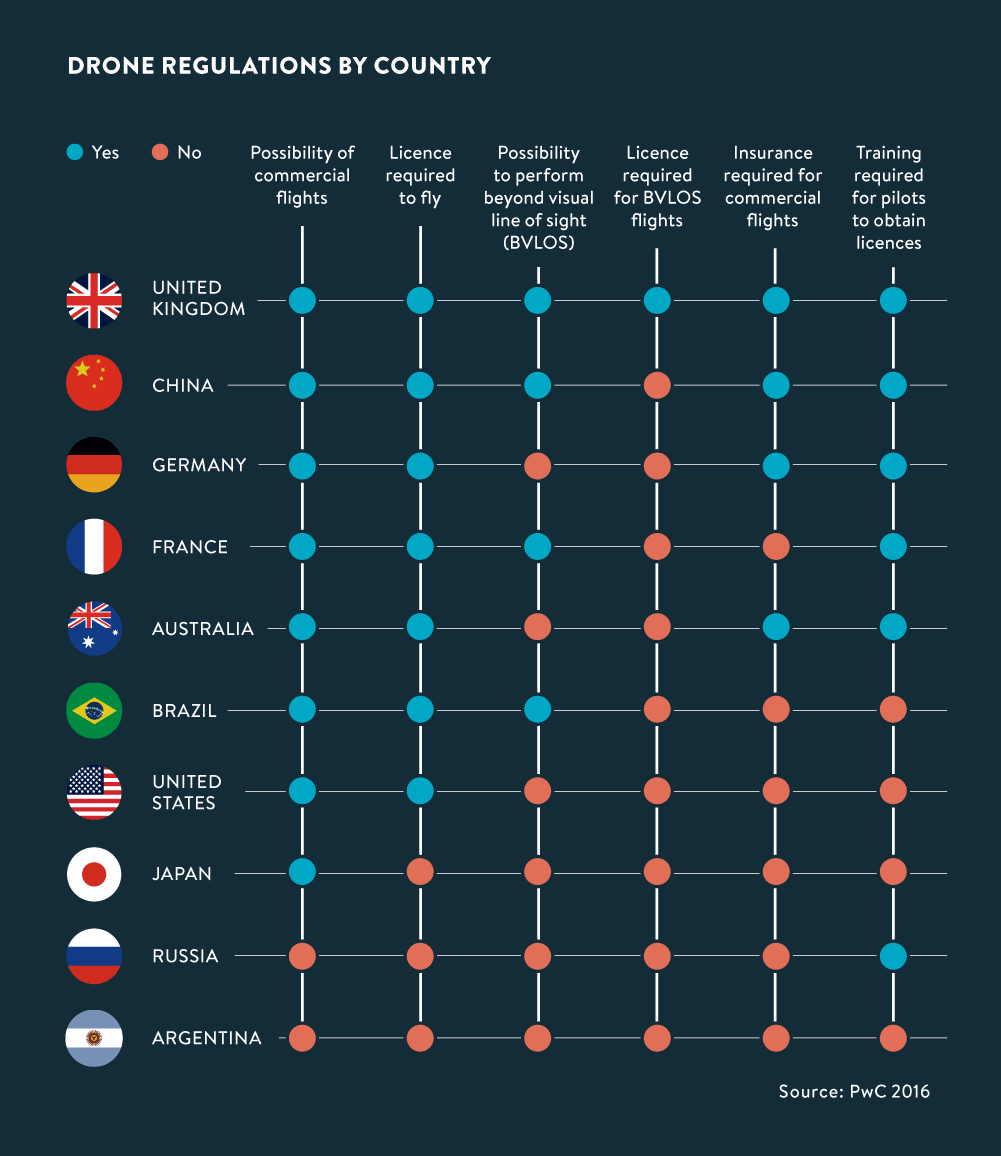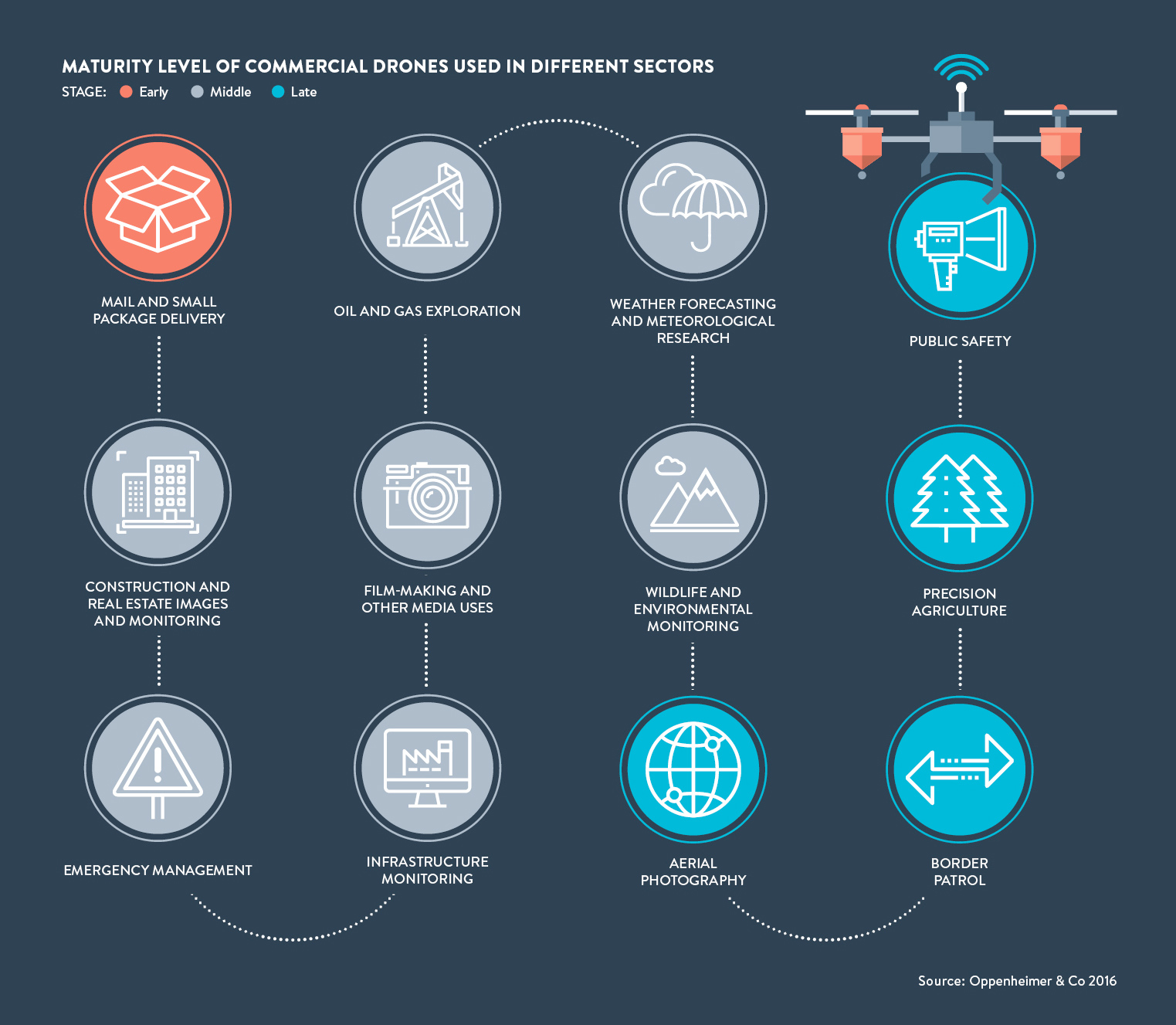The first commercial UAVs (Unmanned Aerial Vehicles) a.k.a. drones were used by Japan in the 1980s to spray pesticides on rice fields. Technology has since come a long way, and though drones are still used in agriculture, drone-powered solutions are allowing companies to create new, disruptive business models.
Drones are not only set to improve business efficiency through the lowering of labour and service costs, but they also have the potential to deliver real-time data that could benefit every sector from the military to transport.
Join us as we analyse the commercial potential of drone technology.

According to Big Four accountancy firm PwC’s ‘Clarity from Above’ report, the value of global drone-powered solutions was over $127bn in 2015.
Infrastructure has the highest value of drone solutions followed closely by agriculture where drones analyse data on land and crops and ensure that crops are sprayed with the highest precision.
Transport has also seen significant disruption by drones, specifically in ‘last mile services’ or the final leg of the supply chain. Ecommerce company Amazon is set to launch Amazon Prime Air in the near future that will see packages delivered to customers in 30 minutes or less using drone technology.

In its Drones Report, BI Intelligence predicts that the global aerial drone market will be worth over $12bn by 2024. Military use of drones will significantly outweigh civilian use and the military sector will continue to lead in its drone focussed spending due to the high costs of military drones and rising demand from countries investing in this form of defence.
In May 2016, the Ministry of Defence unveiled an armed drone, ‘General Atomics Certifiable Predator B’, that is capable of spying on targets for nearly two days, flying in bad weather conditions such as ice and lightning and surviving bird strikes. The Protector drones were announced as part of a boost to special forces and intelligence in the fight against Islamic State in Iraq.

Regulators are behaving cautiously as it is still not clear how drones will interact with the world around them, who is responsible if there is an accident and how users can ensure the devices are safe.
Unsurprisingly, the UK has the most regulation surrounding drones followed by China which, unlike the UK, does not require a licence for BVLOS (Beyond – visual-line-of sight) flights. Germany does not allow BVLOS while at the other end of the spectrum Argentina has little to no regulation surrounding drone flights.

A report on the ‘Civilian Use of Drones in the EU’ published by the European Union Committee and the House of Lords revealed that there are tens of thousands of remotely piloted aircrafts weighing a few hundred grammes in the UK. There are currently no drones that weigh more than 150kg present in the UK skies.

Mail and small package delivery was described as a nascent use of drones by Oppenheimer and Co’s Drone Industry Report. It has been reported that DHL, Alibaba, Amazon, Walmart and Google have tested drones for package delivery. Paul Misener, VP for Global Public Policy at Amazon explained, “We believe that Prime Air drones will be as normal as seeing a delivery truck driving down the street someday. So the novelty will wear off.”
The report also suggests that drone cameras could take market share away from expensive action cameras. Consumer drone cameras will be able to take automatic selfie shots from the air as well as ‘follow me shots’ that film and follow the subjects as they move around.
Drone racing is also emerging as a spectator sport. Drone racers stand by a closed-end track and compete for the shortest time and best skill. Competitors wear headsets that transmit a live feed from the drones’ first person view that gives the sensation of being on the track itself. The 2016 World Drone Racing Championships will be held in Hawaii in October 2016 offering a total of $200,000 in prize money.




